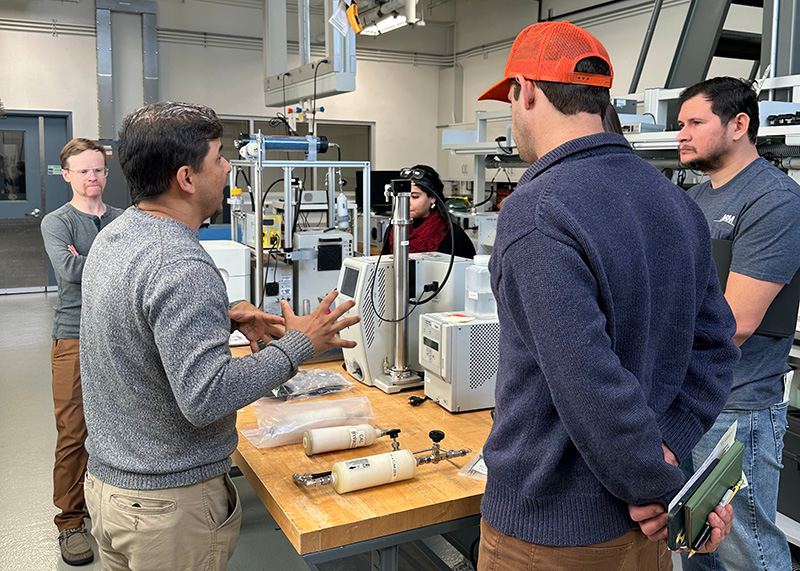First Calibration Activities at the Center for Aerosol Measurement Science at Brookhaven Lab
Published: 22 March 2024
Editor’s note: Olga Mayol-Bracero, lead mentor of ARM’s Aerosol Observing System (AOS), provided the following post.

A group of four site operators from Los Alamos National Laboratory and Hamelmann Communications recently visited the Center for Aerosol Measurement Science (CAMS) at Brookhaven National Laboratory to be trained on aerosol instruments that will be deployed as part of ARM’s Cloud And Precipitation Experiment at kennaook (CAPE-k).
CAPE-k, using components of the second ARM Mobile Facility (AMF2), will augment the ongoing measurements at Kennaook/Cape Grim Baseline Air Pollution Station on the northwestern tip of Tasmania, Australia, and will provide cloud and precipitation observations from a suite of ground-based remote sensors from mid-April 2024 through September 2025. For CAPE-k, ARM will deploy three instruments that are part of the ARM AOS: the aerodynamic particle sizer, the single-particle soot photometer, and the ultra-high-sensitivity aerosol spectrometer.
Led by Olga Mayol-Bracero, ARM AOS mentors from the Aerosol Observations Group in Brookhaven Lab’s Environmental and Climate Sciences Department organized the training at CAMS. It was a two-day training that included calibration and instrument maintenance aspects related to the three AOS CAPE-k instruments. CAMS operations funding is provided by the U.S. Department of Energy’s Office of Science as part of the ARM user facility.
In the closing discussions, the visiting site operators expressed how productive the training had been, and one of them said, “I learned more in two days at CAMS than I have in a whole year.”
The ARM AOS mentors at Brookhaven Lab plan to perform at least three more similar activities during 2024 to train the site operators for ARM’s Southern Great Plains and Bankhead National Forest atmospheric observatories and an upcoming campaign in Maryland, the Coast-Urban-Rural Atmospheric Gradient Experiment (CoURAGE). These training activities show the value of the new CAMS not only for calibrations but also for instrumentation training.
Learn more about the training in this Brookhaven Lab article.
Keep up with the Atmospheric Observer
Updates on ARM news, events, and opportunities delivered to your inbox
ARM User Profile
ARM welcomes users from all institutions and nations. A free ARM user account is needed to access ARM data.


















